Departments
- Samhita, Siddantha & Sanskrit Departmental information
This department popularly known as department of basic principles. Ayurveda originated as part of Vedic science. All the original texts of Ayurveda were compiled in Sanskrit so the Sanskrit knowledge is compulsory to learn Ayurveda. All the popular samhitas like Charak, Shushrut, Ashtanga hridaya Samhita, Bhavprakash, Madhavnidan, Ashtangsangrah, Bhela, Kashyap Samhita and many others Samhita are also studied and taught in this department.
Facilities in the department-
- Well designed museum having 42 models, 120charts, posters
- Well equipped library having more than 144 ancient Ayurvedic books.
- Good tutorial room, projector, T.V set, camera, separate cabins for staff with computer with printer, slide projector and net facility.

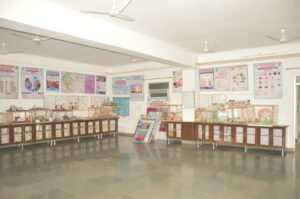


Rachana Sharir is the branch of Ayurveda which deals with the knowledge about bones, muscles, blood vessels, strotas, joints, vital organs and also about the knowledge of Marmas and Garbha Sharir.
Specialties about the Department:
Rachana Sharir not only deals with structural study but also deals with how a better one can be reproduce. The department teaches constitution of body according to the Pancha Bhoota system, embryological and genetic considerations, anthropometry, various body tissues, organs and vital points as described in ayurveda.
Upon completion of this subject, students are expected to be able to describe the details of fertilization; sex determination and differentiation; organogenesis and the human body in terms of dosha, dhatu & mala and apply these concepts in clinical diagnosis and practice.
Most attractive portion is our Anatomy Museum having more than 75 specimens, 65 models and 110 charts are mounted with various sections of body parts.
Articulated skeletons, separate bone sets, models.
Dissection of human body is done regularly in the Department for the comprehensive knowledge of human body.
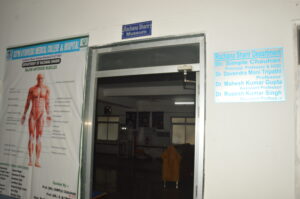
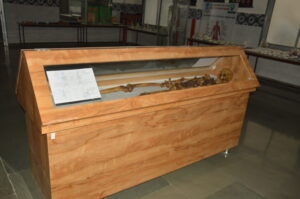
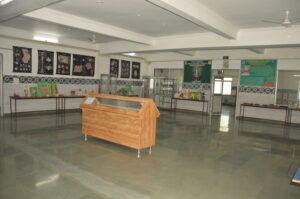
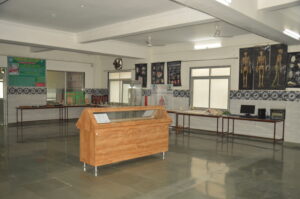
A good physician can get knowledge of disease and medicament successfully if he knows the knowledge of whole body. Sharir shashtra is the gateway of successful management. Kriya Sharir (Physiology) deals with the study of nature and functions of different organs of the body. In Kriya Sharir subject all the basic principles of ayurveda, dosha, dhatu and malas are studied.
Facilities In The Department
Cabines:- Well furnished and ventilated cabine is allotted for each teaching faculty .
Department laboratory :-
Well designed museum having 40 models, 104charts, 42Specimens
Well equipped library having more than 140 Kriya Sharir Ayurvedic books.
Well equipped Laboratory.
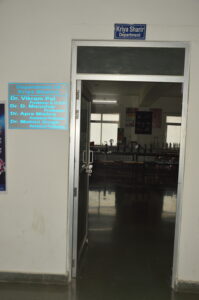
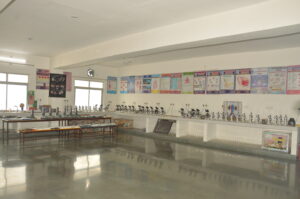

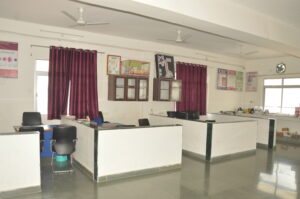
Dravyaguna is a part of Ayurveda which deals with identification, collection, storage and preservation of row materials of plant origin and our dravyaguna department is best in it.
Department is maintained by skilful teaching & non-teaching staff members. Department has well furnished laboratory, equipments, museum, herbal garden which encourages the students for theoretical, clinical & research work.
Facilities in the Department –
Museum– Departmental museum have preserved wet specimens as well as dry samples for further references.
Laboratory– Departmental laboratory is well maintained with instruments required for pharmacognostic study & research purpose.
Library-Departmental library is fulfilled with herbarium sheets, reference books of Ayurveda & pharmacology along with magazines
Charts-Flex charts of herbal drugs & modern pharmacology concepts are available
Herbal Garden– department has well established herbal garden with several plant species marked with botanical name.
Field Visit – Department organizes local & out of state study tours every year for practical exploration
The Subject Rasashastra & Bhaisajya kalpana i.e. Ayurveda Pharmaceutical Sciences concerned with 2nd professional of under graduate course. Branch deals with identification, collection, selection of minerals and Herbs and the preparation if various dosage forms like tablets, Avaleha Asava, Arishta, powders.
Rasashastra means Ayurvedic Pharmaceutics. This department deals with the drugs of mineral origin, their varieties, characteristics, processing techniques, properties and their therapeutic uses along with the descriptions of various apparatus, different kinds of furnaces, heating devices and heating schedules.
Bhaisajya Kalpana is composed of two words, Bhaisajya – Drug and Kalpana – Processing. Processing means samskarana, which will be performed to establish the change in the qualities / properties of the drug either by inducing a new property or improving the existing one and finally making the drug safe and more effective.
Facilities in the department
Well designed Museum having more than 210 specimens, 100 dosage form samples, 58 models of equipments (yantra) , 105 charts of various size.
well equipped Laboratory
Departmental Library for under graduate and post graduate scholars having 144 books (Ayurvedic & Modern)
Research lab for quality control
Good teaching pharmacy with required equipments.
Ayurveda is the science of life, hence concerned with prevention and cure of diseases .Since “Nidan Parivarjana” is the first step for prevention, the study of Nidan should be accurate. Now a day, the life style has changed drastically as compared to the ancient times. This promotes disturbances in physical and mental health. It is therefore necessary to prove the etiological factors of the various newer diseases as compared to the Nidan told in Ayurveda. It is a need of the day to compare the newer and recent diseases with those told in Ayurveda. The pathogenesis and clinical features need to be compared and correlated. Being located in the semi-urban area, we can achieve this as we get patients of all varieties from all classes. The cure for these diseases can be achieved by using basic principle Upashaya-Anupshaya.
Facilities in the Department –
Department is fulfilled by all instruments & Equipment’s which promotes research work conducted by department.
Pathological specimens & Digital charts with schematic diagrams & photographs enrich student’s knowledge.
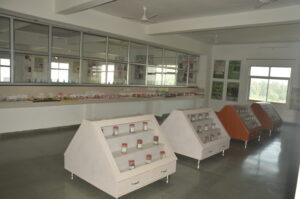
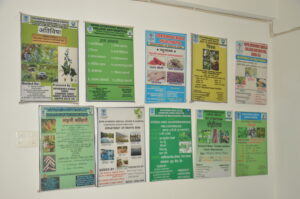

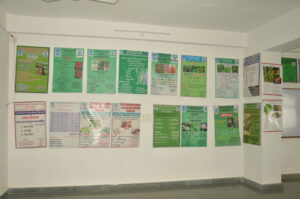
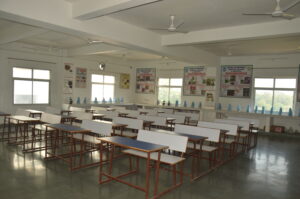
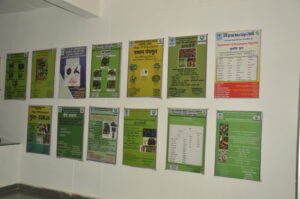
Prevention is main aim of ayurveda. Swasthavritta & yoga subject is mainly deals with prevention and precaution. In short it is preventive medicine of ayurveda. It mainly deals with personal hygiene, social hygiene, communicable -non communicable diseases with their prevention, community medicine and national programmes of various diseases. Along with that yoga is nectar of ayurveda which comes under swasthavritta. Yogasan & pranayam are pillars of longevity and accepted by all communities. Dincharya, Rutucharya, trayopstambha are comes under personal hygiene. Water, air, light etc… are comes under social hygiene. So, here we get all preventive measures for attaining a healthy life. Community medicine deals with vaccination, PHC, health organizations, national programmes, health administration. Hence this branch is social and dedicated to community health.
Facilities in the department
Swastharakshan OPD for diet and yoga advice
Museum
Departmental library
Yoga demonstration room
Tutorial room.
Ayurveda- ancient science of life is believed to be prevalent for last 5000 years in India. Agadtantra is one of the eight branches of ayurveda. It deals with properties, effects and management of poison of animate & inanimate origin. There is in detail study of agadas i.e. vishavirodhi dravya or vishavirodhikalpa which are used since human history itself. It also deals with the laws related to poisons.
Forensic medicine and medical jurisprudence is part of this department. Forensic medicine
( Vyavahar ayurved ) deals with medical aspect of law & medical jurisprudence (Vidhi vaidyak) deals with legal aspect medicine.
In day to day life use of poisonous agents is increased and poisoning has become common. So this knowledge is necessary and compulsory to medical student. Also other part of subject is forensic medicine in which legal inquiry of unnatural death is done. Hence knowledge of post-mortem is necessary which is given in this subject.




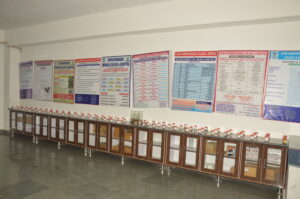

Prasooti & Stri roga is an important clinical department for teaching & training of students. This offers complete expertise regarding diagnosis, investigations, antenatal care, labour, postpartum care and in all gynaecological disorders with both ayurvedic and modern treatment modalities. Department has qualified teaching faculty with good skills in managing gynaecological and obstetrics conditions. Department maintains one OPD in hospital providing emergency and labour services. Department has the responsibility of teaching and training of 3rd year BAMS students.
Facility in the Department –
1) Departmental library (60 Books)
2) Charts (106) , Models (27) and Specimen (17)
3) Well equipped ward, operation theatre, Labour room with all supportive diagnostic tools and equipments.
4) Emergency care and labour services.


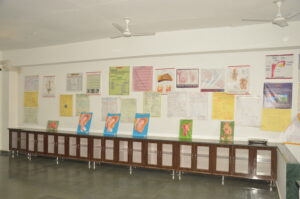
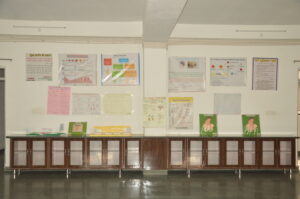
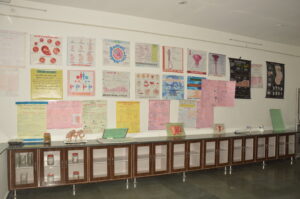
Kaumarbhritya is branch of Ayurveda which deals with the child care both preventive and curative. So, we are very glad to mentioned that in SCPM Ayurvedic Medical College AND Hospital, Gonda, the department of kaumarbhritya (paediatric) is dedicated to the highest quality paediatric patients care in hospital, research and education and related activities. It is devoted to improving the health of children’s. Accordingly; we are much dedicated to excellence and providing you top-tier service to patients and students. While our education service is focused upon the improving the knowledge of the students in Ayurveda as well as in modern medicine through medical education and research. We hope to improve the knowledge of the students and children life.
SPECIALITIES:
Department is running with regular O.P.D. & with special high risk clinics.
Neonatal care unit and neonatal check up in PNC Ward and in OPD.
Special Ayurveda treatment for specific childhood diseases like behavioural disorders, skin diseases etc.
Special panchakarma procedures for various kinds of childhood diseases.
Counselling sessions to be performed by expert doctors to parents in view of, to modulate their view on neurological development and its importance in children.
IPD facilities, also available in hospital with well trained doctors.
Arranging various child health care programmes like suvarna prashan camp, school health check up, vaccination programme, yoga and pranayam camps.
The department includes individual library, various charts of diseases, kalpas, different models, vaccines and commonly used instruments in paediatric practice.
Different Seminars are arranged on various paediatric related topics.
Academic activities also performed on regular interval.
Educational tours also arranged by the department
Ayurveda is broadly classified into 8 parts called as Astang Ayurveda. Shalakya Tantra is one part of Astang Ayurveda which deals with the diseases of Urdhav-jatru i.e. body above the clavicle mainly it deals with the diseases of eyes, mouth, nose etc. To treat these diseases Shalaka (Probe) is used. So the subject is called as ‘Shalakya Tantra”. Shalakya tantra is nothing but the branch that cures the disease above clavicle i.e. eye ear nose mouth and throat, along with shirorag. Department is having separate O.P.D. like netra, karna nasa shirorog and mukhrog with fully equipped operation theatre of ophthalmology and ENT. Department is having fully skilled surgeon and done number of ophthalmic and ENT surgeries.
Facilities in Department –
Departmental Library
Departmental Museum
Tutorial Room
Digital charts and Paper charts
Models and Surgical instruments
Shalya tantra is one of distinct of astang Ayurveda will teaches us surgical knowledge and procedure that are performed and used by thousands of years. modern plastic surgery speciality that has its origin from shalya tantra which documented in modern journals.
Surgical knowledge of disease and treatments described in shalyatantra can be researched and used in diseases with minimum complications and side effects . now a days world is turning to Ayurveda for comprehensive treatment for diseases .
Our shalya tantra department conduct fourth year B A M S. ( Shalya tantra )
Facility in the department –
Have the good library in that all types of surgical books available
Have the basic knowledge and surgical principles described in shalya tantra by various acharyas
Have 1 presentation hall in that we discuss about cases
Have all types of surgical instruments
Have all types of organs samples with museum
Have medicine samples
Have separate cabin all teachers and HOD and P G students
Shalya tantra department have good teaching staff are available
All the staff is experienced and specializes in surgical field
Kayachikitsa is one of the basic clinical Subject of Ayurveda being taught in the final year B.A.M.S degree course. Kayachikitsa is the for most branch of Astang Ayurveda. This subject mainly deals with the diagnosis and treatment of various diseases. This department is essentially concerned with the education, research, & patient care in field of Ayurvedic internal medicine. We have well qualified, studious, co-operative & experienced teaching staff. The department offers teaching and training module as per CCIM guidelines. We have well maintained library with variety of books. Departmental teaching staff is attached to the hospital to provide practical, clinical knowledge to student. Department takes efforts to prepare best clinicians, academicians &socially aware person during college life .Department also interested in conducting research in providing cure and care for various diseases with the help of Ayurveda.
Facilities in the Department –
Ayurveda and panchakarma treatment for following diseases.
Diabetes and Obesity Joint Problems -Osteo arthiritis and Rheumatoid Arthiritis Spine problems-cervical spondylysis, spondilitis etc,
Skin Diseases G.I System problems Chronic Cough and Asthma Paralysis etc…..
Departmental library Charts, Models and Specimens
Ayurveda is defined as a system which uses the inherent principles of nature, to help maintain health in a person by keeping the individuals’ body, mind and spirit in perfect equilibrium with nature. In ancient India, this system was the only prevalent one which could help the ailing humanity. These all the things can be achieved by Panchakarma. Which is unique and the best department of institute.
Panchakarma therapy is actual strength and backbone of Ayurveda, which include five karmas (procedures) i.e. Vamana, Virechana, Basti, Nasya and Raktamokshana. These procedures are based on pre-procedures like snehan (oleation or massage), Swedan (fomentation or steam), Vamana (Emesis), Virechana (purgation), Basti (Anorectal administration of drugs), Nasya (nasal administration of drugs) and Raktamokshana (blood letting). Other procedures like shirodhara, Shirobasti, Shiropichu and Abhyang are also conducted. Special Netratarpana is also done for ophthalmic problems. Jalauka (leeches) are preserved in tank and can be reused for Raktamokshan. Agnikarma is mainly done in separate compartments. Special procedures like Janu basti, Kati basti, Hridh basti are also performed. Pinda sweda is done routinely with other special panchakarma procedures like pizhichil in this department
Facilities –
Hospital where all the Ayurvedic procedures are carried out Separate male ward
female ward
Well furnished special rooms
Panchakarma theatres separate for male and female
Departmental library
Tutorial room
Museum
